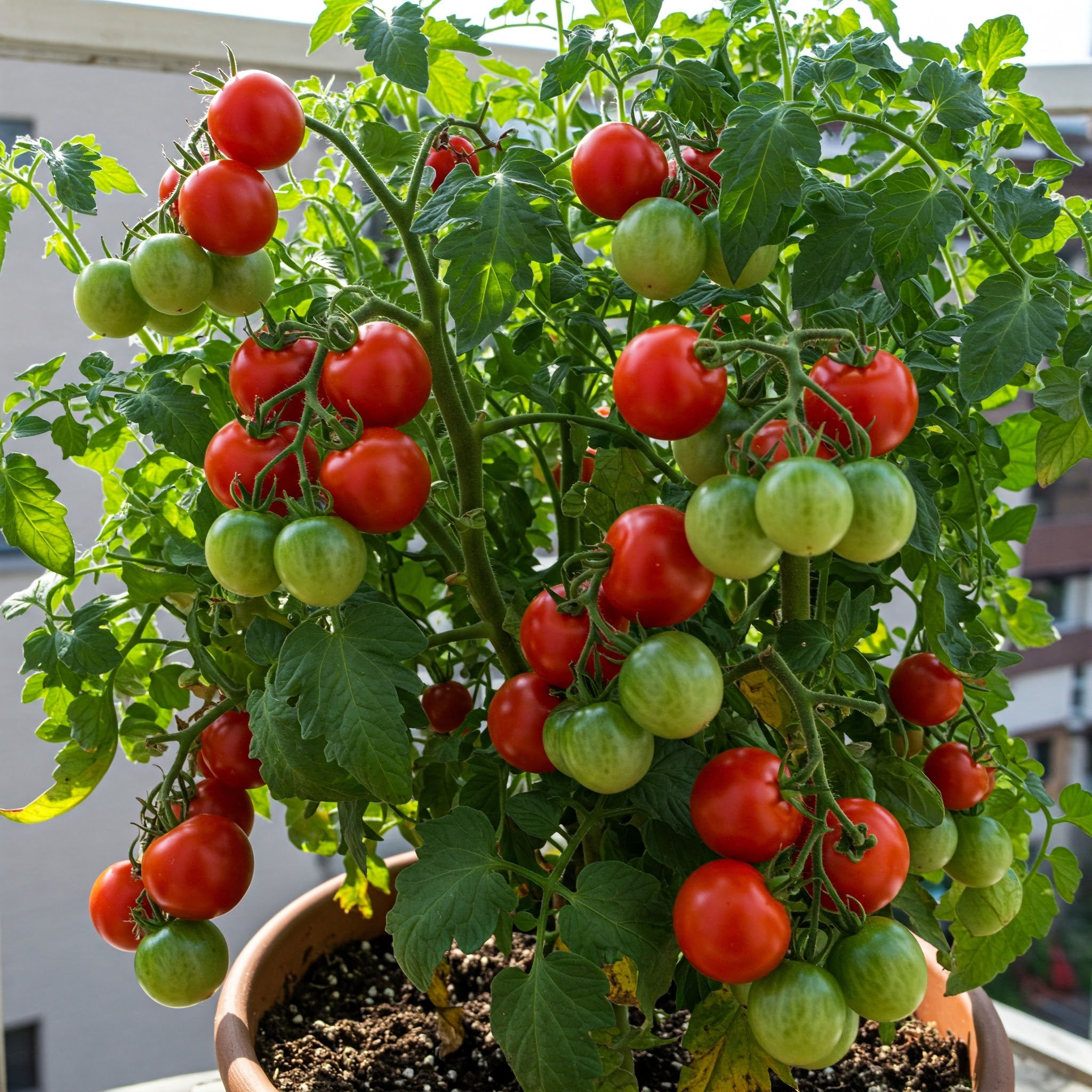ADVERTISEMENT
### **How to Grow Tomatoes from Cuttings:**
**Step 1: Choose the Right Tomato Plant**
– Select a healthy, non-diseased tomato plant to take a cutting from. Make sure the plant is at least a few months old and has plenty of strong branches.
**Step 2: Take the Cutting**
– Cut a healthy branch of the tomato plant with a sharp knife or scissors. The cutting should be around 4-6 inches long and contain at least 2-3 leaf nodes (the small bumps on the stem from which leaves grow).
**Step 3: Remove Lower Leaves**
– Remove the leaves from the lower part of the cutting, leaving only the top few leaves. This will help the cutting establish roots without the extra foliage.
**Step 4: Root the Cutting**
– Place the cutting in a jar of water, ensuring that the cut end is submerged, but the leaves are not touching the water.
– Place the jar in a warm, sunny location and change the water every few days.
– After 1-2 weeks, the cutting should develop roots, at which point you can transplant it into soil.
**Step 5: Plant and Care for the Tomato Cutting**
– Once the cutting has established a healthy root system, plant it in soil. Be sure to water it regularly and provide it with plenty of sunlight. Treat it like a normal tomato plant, ensuring it gets enough nutrients to grow strong and healthy.
This method is great for those who have an existing tomato plant and want to propagate it into new plants without spending money on seeds.
## **4. Companion Planting and Natural Pollination**
When growing tomatoes, it’s important to consider the benefits of companion planting. This practice involves growing certain plants alongside your tomatoes to enhance growth, reduce pests, and increase overall yield. Some excellent companions for tomatoes include basil, oregano, and marigolds.
– **Basil**: Helps deter pests like aphids and improves the flavor of tomatoes.
– **Oregano**: Acts as a natural pest repellent and attracts pollinators.
– **Marigolds**: Their strong scent deters pests like nematodes and aphids.
By planting these companions alongside your tomatoes, you encourage natural pollination and pest control, helping your tomatoes thrive without the need for chemical interventions.
## **5. Vertical Gardening for Higher Yields**
If space is limited in your garden or home, vertical gardening is a great solution. Growing tomatoes vertically allows you to grow more plants in a small space, increasing your yield without the need for a large plot of land.
### **How to Grow Tomatoes Vertically:**
**Step 1: Choose the Right Tomato Variety**
– Opt for indeterminate tomato varieties, which grow tall and continuously produce fruit. Determinate varieties, on the other hand, are bushier and more compact, making them less suitable for vertical gardening.
**Step 2: Set Up Support Structures**
– Use stakes, cages, or trellises to support your tomato plants as they grow. Ensure that the support is strong enough to hold the weight of the plant and its fruit.
**Step 3: Plant and Train the Tomatoes**
– Plant your tomatoes at the base of the support structure, and gently tie them to the support as they grow. This keeps the plant upright and prevents it from sprawling across the ground.
– Regularly prune the plants to remove any excessive growth and to allow sunlight to reach all parts of the plant.
**Step 4: Care for the Plants**
– Provide your vertical tomato plants with adequate water, sunlight, and nutrients to ensure a high yield.
By using vertical gardening techniques, you can maximize your harvest, ensuring you get a high number of tomatoes from a small area.
—
## **Conclusion: Reap the Rewards of Free, High-Yield Tomatoes**
Growing tomatoes without buying seeds is not only cost-effective, but it also encourages sustainability, self-sufficiency, and creativity. Whether you use tomato seeds saved from your kitchen scraps, propagate cuttings from existing plants, or grow them vertically, you can enjoy a bountiful harvest without breaking the bank.
By taking advantage of these natural growing methods, you can enjoy fresh, homegrown tomatoes all season long. Plus, you’ll be contributing to a more sustainable and environmentally friendly way of growing food.
So why spend money on seeds when you can grow tomatoes for free right at home? Start today and watch your garden—or windowsill—transform into a tomato-producing paradise!
